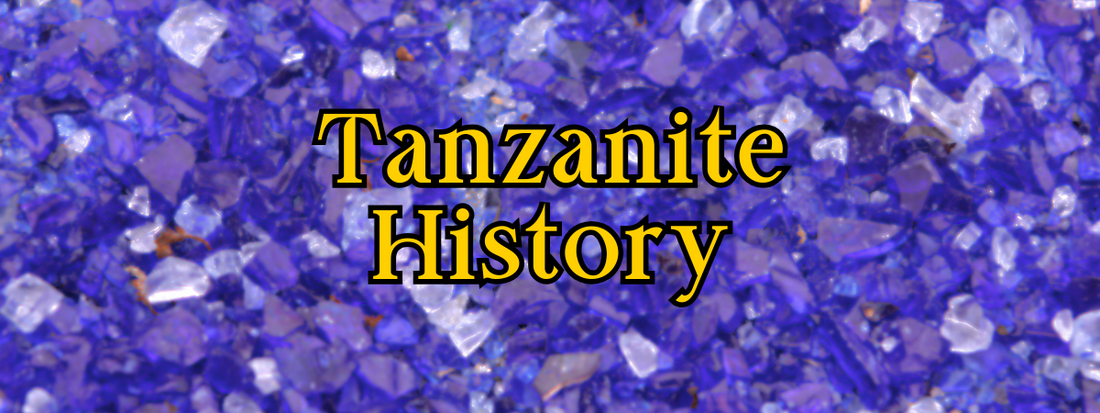
Tanzanite: The Lightning Stone with a Modern Origin Story
Most gemstones come with centuries of myth and legend. Tanzanite? It has something else: a real-life origin story full of chance, intrigue, and a touch of geological magic.
Discovered in 1967, tanzanite is one of the most recently found and commercially embraced gemstones. Unlike the ancient stones revered by Pharaohs or Roman nobles, tanzanite made its debut just as colour television and space exploration were hitting their stride, making it a thoroughly modern gem with a short but captivating history.
 A Discovery Sparked by Fire
A Discovery Sparked by Fire
The story begins in northern Tanzania, in the shadow of Mount Kilimanjaro. Local Maasai tribespeople were the first to notice something unusual: vivid blue-violet crystals shimmering in the sun, where none had been before.
According to local tales, a bolt of lightning set the surrounding bushland ablaze, and the fire somehow transformed the brown zoisite crystals into the vibrant blue stone we now know as tanzanite.
While the science indicates it wouldn't have been the result of a bush fire, the blue colouring is the result of natural heat treatment, so the tale of a lighting strike adds a beautiful touch of poetry to an already rare and unique gem.
 From Maasai Hills to the World Stage
From Maasai Hills to the World Stage
The man credited with officially bringing tanzanite to the world is Manuel de Souza, a tailor and part-time gold prospector. He stumbled upon the crystals in 1967 and, believing he'd found sapphire, sent them off for analysis. The results showed it was something new: a previously unknown gem quality blue variety of zoisite.
Before long, Tiffany & Co. saw the potential of this new gemstone. They rebranded the gem as tanzanite, highlighting its single-country origin, and launched it with a glamorous international campaign. Within a few short years, tanzanite had gone from unknown crystal to a coveted stone appearing in high-end jewellery worldwide.
 A One-Location Wonder
A One-Location Wonder
What makes tanzanite even more special is its exclusivity: it is only found in a tiny 7km strip of land near the Mererani Hills. There is no other known deposit of tanzanite anywhere else on Earth, making it an estimated thousand times rarer than diamond.
This limited geography has made it both valuable and vulnerable, which brings us to the role of the Tanzanian government in protecting its most famous gem.
 Protecting the People and the Stone
Protecting the People and the Stone
Recognising how important tanzanite is to both the local economy and national identity, the Tanzanian government has taken several steps to ensure the benefits of the gemstone stay within the country.
- In 2010, the government banned the export of rough tanzanite over one gram, encouraging local processing and job creation.
- TanzaniteOne, a prominent mining company in the area, has in the past supported community initiatives, though some efforts have faced challenges and mixed reviews from locals.
- Revenues from the tanzanite trade contribute to regional development and help support the tribes who first discovered the stone, particularly through employment opportunities and community programmes.
While there’s still room for progress and fairer distribution of wealth, there’s a clear focus on making tanzanite more than just a gem, it’s becoming a positive tool for local empowerment.
 A Stone for Today
A Stone for Today
Unlike most gems that arrive with myths from long ago, tanzanite’s story is very much of the present. It’s a stone of transformation, born from heat, discovered by chance, and now shaping lives in its place of origin.
So while it may not come with ancient legends, tanzanite brings something just as valuable: a true story that connects nature, people, and purpose.
And maybe that’s even more magical.
